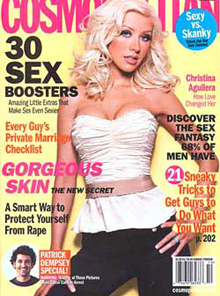 It’s pretty obvious that I’m not a shy person.
It’s pretty obvious that I’m not a shy person.
As such, I have no idea what it’s like walk into a room of strangers and be utterly crippled by communication apprehension.
But sometimes I wish I did.
See, I think it’s valuable for people – shy or not – to understand both sides approachability. That why I’ve read a lot of stuff on shyness over the years.
Here’s 19 of my favorite points:
1. Shyness affects approximately 40% of all people, according to bestselling author Bernardo Carducci.
2. To increase your attitude of approachability, assume and expect that people are friendly and will welcome you into their conversations and lives.
3. Social anxiety, a more clinical and severe form of shyness, is a combination of three influences: physical (what you feel), cognitive, (what you think), and behavioral, (what you do).
4. Shyness is the result of thinking that losses outweigh the gains in an encounter.
5. Your behavior will only change when you decide to change it.
6. All shy people have this in common: they’ve been called shy by other people.
7. You are what you are because of the way other people see you.
8. Change your attitude = change the way you act = changes the way people see you = change the way you see yourself.
9. Self-confidence grows from the way people responded to you in the past.
10. A cause of shyness is thinking, “Nobody likes what I like.” Really? Go online, type in what you like, and just WATCH how many like-minded people are out there!
11. Passion = approachable and attractive. So, find a way to get on the topic of your passion in every encounter. People need to see you talking about and doing what you’re really good at and passionate about.
12. Shy people believe that trouble in communication is inevitable and that any triumphs they’ve had have either been flukes or not their fault.
13. Avoid telling people that you’re shy or introverted. They will believe you and it will become a self-fulfilling prophecy.
14. Don’t Suffer a Toothache = I’m too tall, too shy, and too low in company hierarchy, too busy, too important. Don’t let these self-limiting beliefs stand in your way of approaching someone.
15. Being told repeatedly that “you only have one chance to make a first impression,” and other pressure/fear based warnings will cause someone to overly concern themselves with first impressions, and as a result, make mistakes.
16. Catastrophic Thinking – when you exaggerate the importance of some event, i.e., “This is the most important speech of my life! If I mess up, I’m finished!”
17. Black & White Thinking – oversimplifying events, perfectionism, i.e., “I have to ace this interview. I can’t mess anything up at all.”
18. Shy people excessively apologize to seek reassurance.
19. Shy people use “Safety Behaviors,” a form of avoidance that controls anxiety. Examples include: sitting in the back or arriving early so they’re not the center of attention when they walk in the room.
LET ME ASK YA THIS…
On a scale from 1-10, how shy are you?
LET ME SUGGEST THIS…
To enlighten us extroverts, post your three best nuggest about shyness here.
* * * * *
Scott Ginsberg
Author/Speaker/That Guy with the Nametag
www.hellomynameisscott.com

 A surprisingly great resource for all things approachable is Cosmopolitan magazine.
A surprisingly great resource for all things approachable is Cosmopolitan magazine.  Perhaps the folks at
Perhaps the folks at 
 Picture this: you’re standing in a room full of strangers, not talking to a soul. You’re hoping to make at least one connection, but can’t seem to get the ball rolling. Eventually you think, “This is ridiculous. Why can’t I start a conversation with anyone?”
Picture this: you’re standing in a room full of strangers, not talking to a soul. You’re hoping to make at least one connection, but can’t seem to get the ball rolling. Eventually you think, “This is ridiculous. Why can’t I start a conversation with anyone?” In 20 minutes, you have the biggest sales call of your life.
In 20 minutes, you have the biggest sales call of your life.  1. I need your help. When approaching a service agent or receptionist, this opening line appeal to someone’s instinctive helpful nature. You’re likely to get a better response (and better service!) if you use this line.
1. I need your help. When approaching a service agent or receptionist, this opening line appeal to someone’s instinctive helpful nature. You’re likely to get a better response (and better service!) if you use this line. Alright. Something weird is going on here.
Alright. Something weird is going on here.  The April 10-23, 2006 issue of
The April 10-23, 2006 issue of 
 Toastmasters, meet
Toastmasters, meet